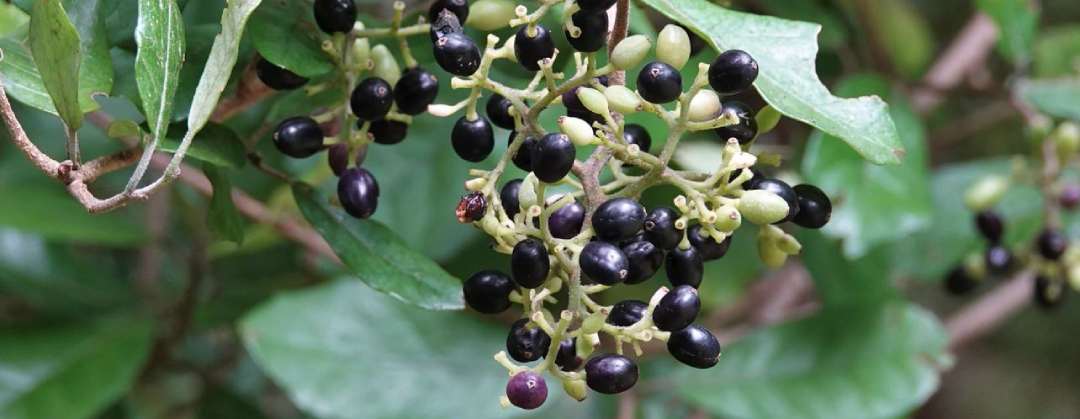Ahikōmau, Hine-kaikōmako.
Pennantia corymbosa Kaikomako | Kaikōmako

This guide is based on a literature review. It compiles information from various sources. Different sources may offer varying advice and findings.
Good germination. Uncertainties found with sowing to germination timeframe and long-term storage.
Moderate.
Dioecious — can only collect seeds from female plants.(1)
Seeds mature between March-May.(1)
Seeds store well.(1)
Cleaned seeds had a germination rate of 90% or higher.(3)
Germinate under cool to moderate conditions.(1)
Germination, seed storage, and vegetative propagation needs further investigation.
Information about the native seed profiles
All species names are in the following order: scientific name, common name, and Māori name. Names may vary by region. We have tried to use the most common names across New Zealand.
We have sourced photos from different websites and creators. We have used the images under different licences. These include Public Domain and Creative Commons licenses. For Pennantia corymbosa, the image details are:
-
Photo by (c) Jacqui Geux – some rights reserved (CC BY)
- Original image
The basis for each seed profile is a literature review carried out by Scion. Te Uru Rākau – New Zealand Forest Service commissioned and worked on the review to produce a native seed catalogue. The full seed catalogue is on the Ministry for Primary Industries (MPI) website.
References
Metcalf, L J (1995) The propagation of New Zealand native plants. Godwit; Auckland, New Zealand.
Burrows, C J (1995) Germination behaviour of the seeds of six New Zealand woody plant species. New Zealand Journal of Botany 33, 365-377.
Robertson, A W; Trass, A; Ladley, J J; Kelly, D (2006. Assessing the benefits of frugivory for seed germination: the importance of the deinhibition effect. Functional Ecology 20, 58-66).